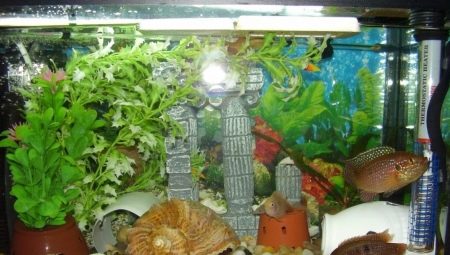Water filtration is the most important and necessary factor for comfortable living of fish and other living creatures in the aquarium. The choice of water purification systems depends on the volume of the home reservoir, the species of fish and the preferences of the host. The optimal balance of the aquatic environment can be achieved using various filters, the bottom one of them.
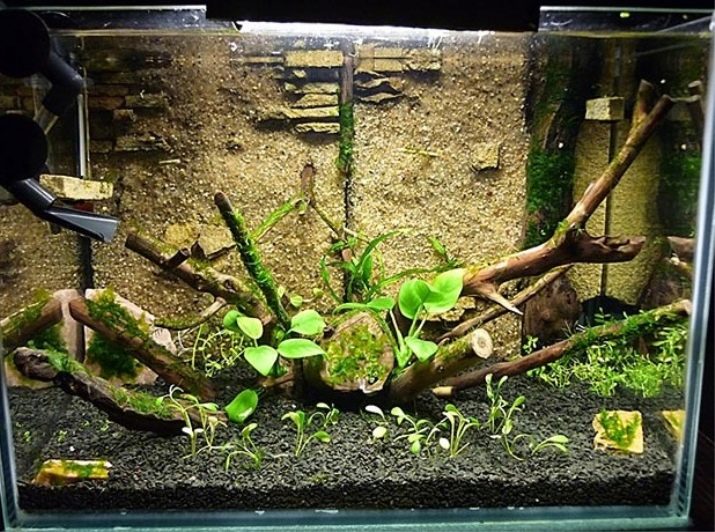
Principle of operation
The purpose of the bottom filter, otherwise called false, is to clean the aqueous medium of an artificial reservoir by the forced method using a water pump through a false bottom made of a special grate and large and medium sized stones placed on it. Since the filtering device is located at the bottom of the aquarium, it refers to the inside.
It is necessary to carry out its installation first of all before putting the aquarium into operation.
The structure of the cleaning element is not very complex and quite compact.
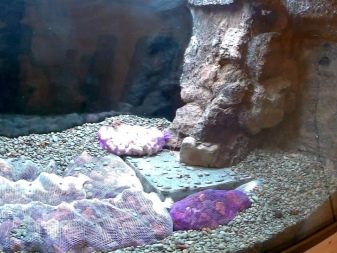
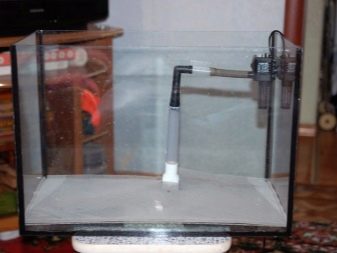
Kinds
According to the filtering method through false water treatment systems are direct and reverse.
- Straight - the most common method of cleaning, the system consists of a special filter screen, a layer of soil, a pump. The liquid under the influence of the compressor through the soil and the cleaning mesh seeps between the false and the actual bottom and already filtered back into the aquarium. Cartridges that are used for cleaning are installed with the compressor under the artificial bottom. They cannot provide high-quality water filtration; waste products settle on the ground and gradually pollute the aquarium.
- Reverse - this method is most effective due to the fact that the water pump through the false bottom and the soil pumps water in the opposite direction. Particles of waste and soil get into the filter, cleaned and pushed into the tank. Due to this, the liquid in the home reservoir does not stagnate, and the siphon of the bottom should be carried out less often than with the direct cleaning method.
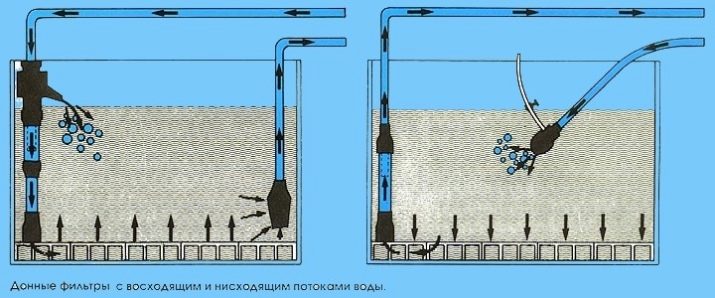
Positive and negative sides
Like any mechanical device, the bottom filter has its pros and cons.
Advantages:
- forced and uniform mixing of water layers;
- the false bottom of the reservoir practically does not occupy the internal volume;
- low price compared to other types of cleaning systems;
- water purification at a fairly high level in a mechanical and natural way;
- maintains biological balance in the tank;
- evenly distributes soil pressure to the bottom of the aquarium.
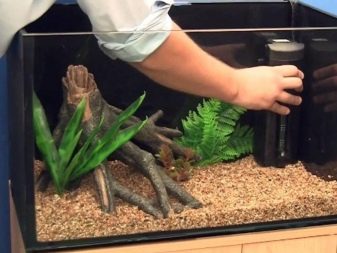
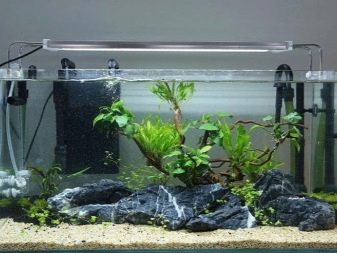
Disadvantages:
- for the installation of the bottom filter and subsequent maintenance, it is required to temporarily place all residents of the home reservoir in another container and completely clear the tank of living plantings, decorations, soil and drain the water;
- incomplete water treatment - fractions of waste products of the aquarium population partially settle on the ground or fall through the grate;
- drainage pipes require regular cleaning, which is associated with certain difficulties (complete dismantling of the filter system and the destruction of the ecological balance);
- the inability of bottom filters in large aquariums to efficiently and reliably perform their work (a large amount of liquid and resistance negatively affect the performance of their functions);
- inadmissibility of installation in aquariums with a large number of living plantings, since this type of filter selects nutrients from plants;
- the inhabitants of the aquarium (small fish, fry, shrimp and snails) through the cracks in the grates can penetrate into the space between the filter and the bottom, complicating the maintenance of the reservoir.
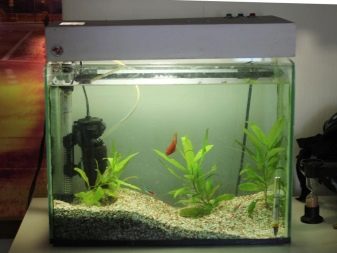

How to do it yourself?
To make a filtering device for a 20 liter round aquarium, we will need such materials and tools:
- tubes made of polymer materials;
- plastic corner for laying cables;
- junction box for connecting channels;
- plexiglass;
- protective (mosquito) net;
- water pump with the ability to adjust the water supply;
- various tubes for connecting the pump to the drainage system;
- hacksaw;
- drill or screwdriver;
- roulette;
- hose.

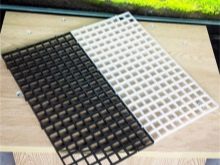
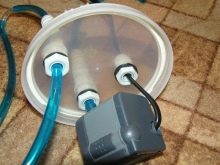
First we measure the home tank. Based on the dimensions, we calculate the length of the tubes that we will need for the installation of the drainage system. Pipes with a diameter up to 30 mm are most suitable. We cut a circle along the diameter of the aquarium bottom from plexiglass. Then carefully drill holes (you can also use a soldering iron) with a diameter of about 10 mm, as close as possible to each other. We are preparing a round hole for the central pipe into which the pump will be mounted.
After we mount the tubes in the system, you need to make gaps in them. We install a pump in the central pipe, for even circulation of water on the side farthest from the pump, you need to drill more holes. We connect the tubes to each other, we install plexiglass with a protective mesh on them and a central pipe with a compressor. After installing the structure, soil is laid in the tank and filled with water. For some time, a health check is carried out, and only then can pets be launched into a home pond.
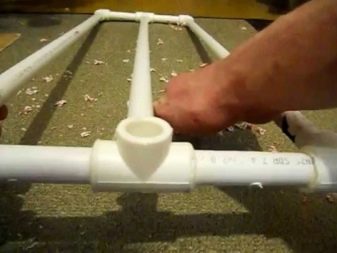
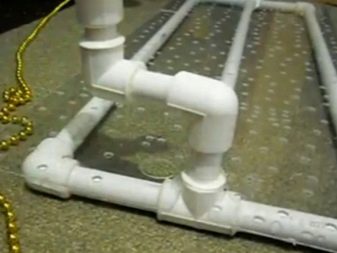
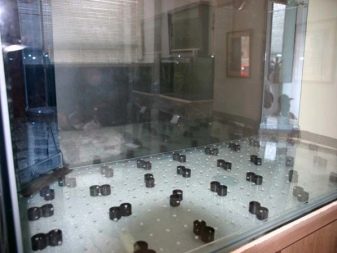
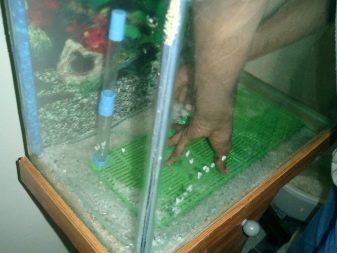
Care
After some time, bottom sediments and waste products from the population of the home reservoir begin to impede the operation of the filter system. Significantly decreases the volume of circulation and the quality of water treatment. This can lead to the development of dangerous infections.
To prevent the propagation of pathogens in the aquarium, it is required to carry out filter maintenance at least once a year.
Procedure:
- the tank is completely drained;
- fish, plants and other populations are temporarily relocated to another capacity;
- soil, grill and other equipment are removed from the aquarium;
- everything is thoroughly washed under running water without the use of detergents;
- if any parts have even slight damage, they must be replaced immediately;
- the bottom of the reservoir is cleaned of debris and dried;
- install the filter system in place;
- we return the rest of the equipment;
- pour water, check performance;
- We launch fish and other inhabitants of the aquarium.
The bottom type system is a fairly productive method for cleaning the aquatic environment in the aquarium, which contributes to the natural method of filtration (through the ground). The great advantage of this system is the ability to make it without much labor with your own hands.
Next, watch a video with tips on how to make a bottom filter with your own hands.
